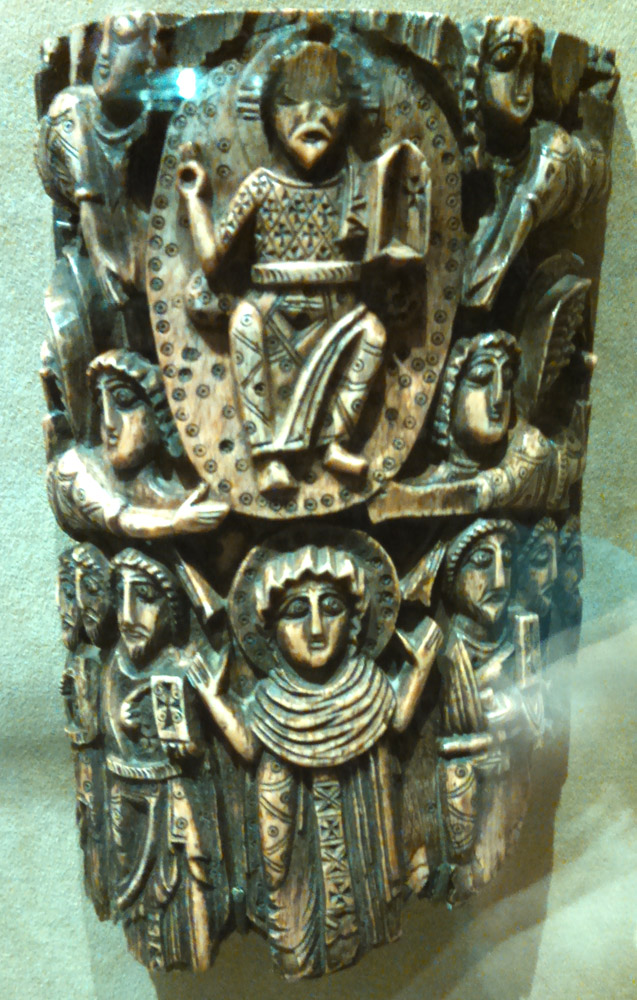



The Ascension
Egypt, 720-970
Elephant ivory
Metropolitan Museum of Art
In the first photograph at left, angels carry Christ to Heaven in a mandorla. He blesses the viewer with his right hand while his left holds some sort of chest, possibly a representation of the empty tomb. The Virgin Mary stands orant directly below. The figures at her sides, probably evangelists, point to books they are holding.
In their resemblance to liturgical vestments, the Virgin Mary's garments reflect her role as a type of the Church, the visible manifestation of himself that Christ leaves as he returns to the Father. Her halo, which is not worn by the others in the lower register, bespeaks her role in the "supernatural enlightenment that Christ's divinity had shed on her and all humankind in the Incarnation."1
The range of dates given on the museum's label is based on carbon dating. If the work was indeed carved in Egypt for local use, it could have been produced at any time during that range. But if it was produced in or for the churches governed from Constantinople, it would probably be from after 780, when the Empress Irene restored the veneration of icons that had been forbidden since 726. The "iconoclast" movement that prevailed between those dates was never embraced in Egypt.2
The second photograph is of fragment of a very similar ivory carbon-dated 810-1010. Christ's garb and gesture are identical, and he again carries that unusual box. The angel wears the same robe, but his wings are more expressive and the eyes are less round and bulgy. The biggest difference is that there does not seem ever to have been a second angel above the one seen here.
View these images in full resolution.
Read more about images of the Ascension.
Photographed at the museum by Richard Stracke, shared under Attribution-NonCommercial-ShareAlike license.